Film brings the dramatic tension of 'Luce' to life at Sundance
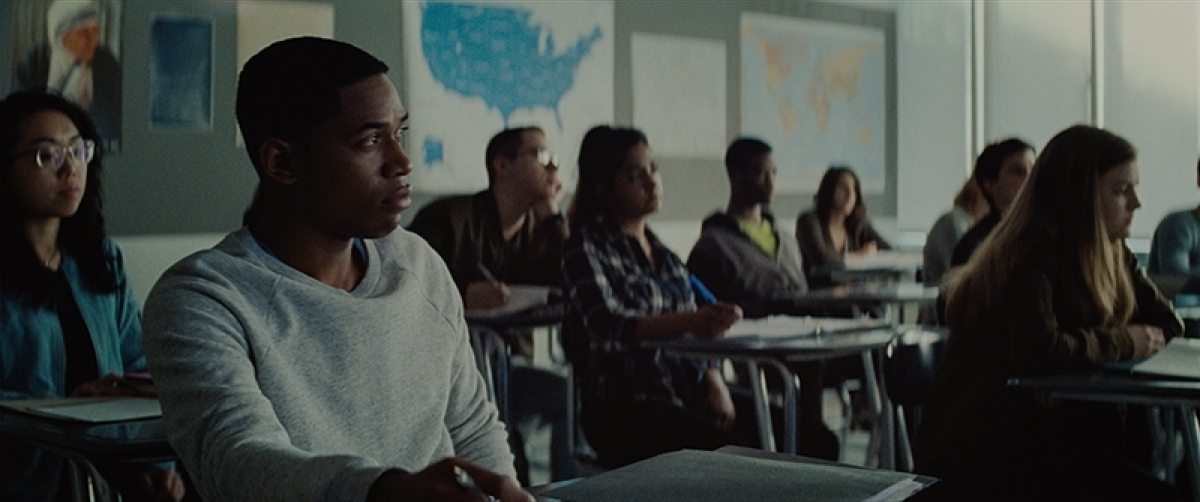
Luce Edgar (Kelvin Harrison Jr.) watches Harriet Wilson (Octavia Spencer) in class. Courtesy of Cinetic.
A play written by J.C. Lee about an exemplary high school student, adopted from a war-torn African country, whose motives are called into question by a teacher, gets adapted for the big screen courtesy of filmmaker Julius Onah (The Cloverfield Paradox). Luce stars Kelvin Harrison Jr., Naomi Watts, Tim Roth and Octavia Spencer as well the cinematography talents of Larkin Seiple (Cop Car). “I was attracted to its focus on character development, dialogue and the subtle tension it built,” notes Seiple. “This was the first feature I was able to shoot on 35mm, which changed how I approached the project.”
A film print was made from the Digital Intermediate (DI) that was projected for the world premiere at the 2019 Sundance Film Festival. “Simply put, film is the best-looking format,” remarks Seiple. “The color rendition is astonishing. After color grading it and seeing what it does for skin and faces, I’ll be hard pressed to opt for digital over film. Julius pushed for film from day one and his decision is what made it happen. Then to top it off Julius wanted to shoot 4-perf anamorphic on an indie budget! We ended up shooting 3-perf anamorphic.”
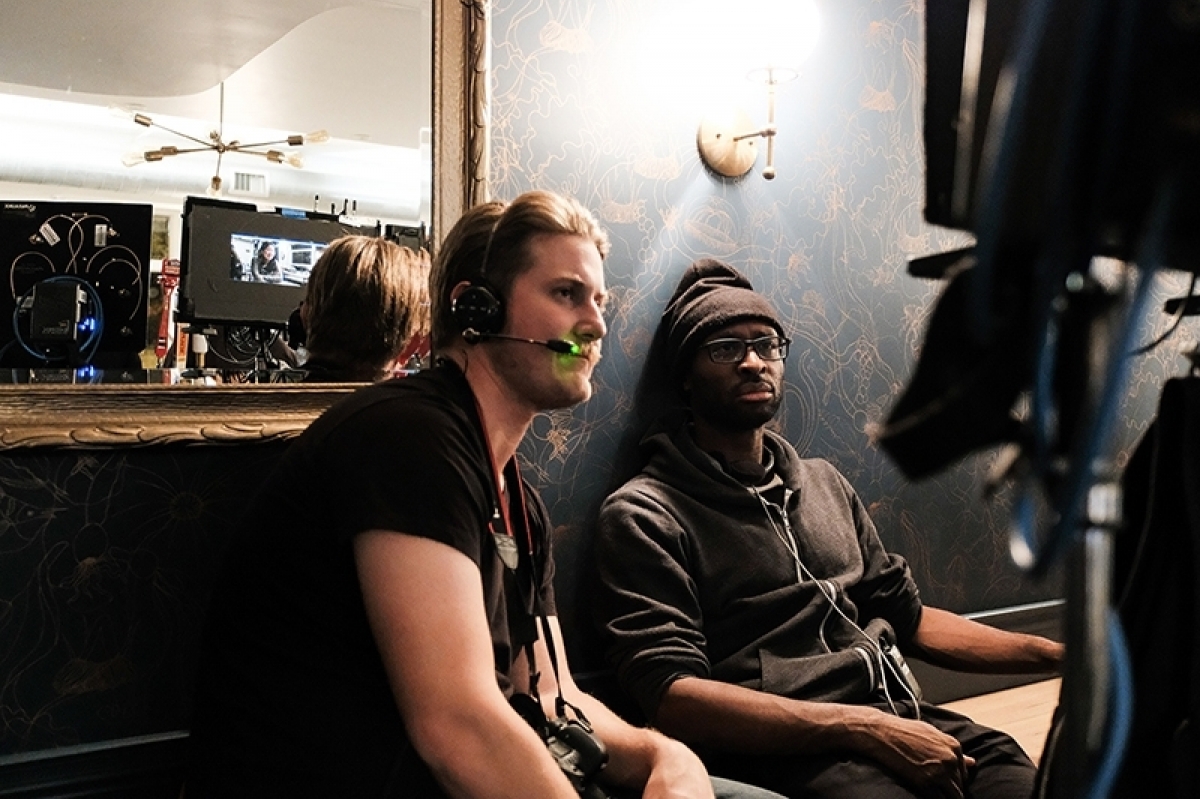
DP Larkin Seiple and director Julius Onah on set with the monitor reflected in the mirror. © Jon Pack.
KODAK VISION3 500T Color Negative Film 5219 was used for day, night, interiors and exteriors throughout the entire shoot. “It’s gorgeous. Because we were shooting 3-perf instead of 4-perf anamorphic, the grain is also more apparent in a really, lovely way; it’s neither grainy or clean but lives in this subtle purgatory of texture. If there was a faster stock available, I would have used it because we shot at a t2.8 which was a challenge for lighting on a budget.” Seiple adds, “I don’t like to push the stock or pull the stock photochemically unless I’m really after some grain or making a photochemical print. I prefer to push or pull it in the grade as I’ll have more control.”
During the four weeks of prep, every weekend involved shot listing and drawing layouts of every scene. “Julius and I first bonded over our mutual love of Michael Haneke’s work [Amour, The White Ribbon], the minimal coverage and how camera placement can dramatically alter a character’s perspective,” states Seiple. “The progression of the film itself is like a chess match so we spent ages figuring out how to mirror the tension with shot structure and coverage.”
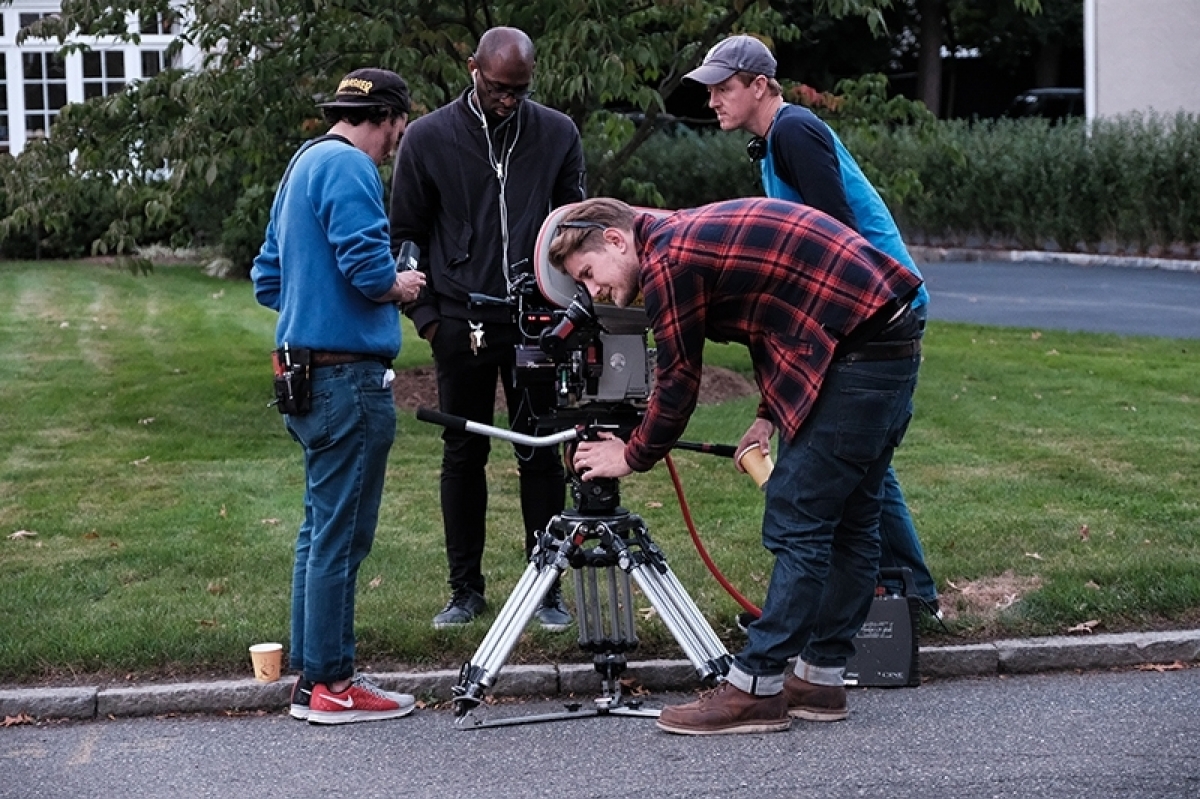
Left: Zach Rubin; Center left: Julius Onah; On Camera: Larkin Seiple, Above right: Dave Isern. © Jon Pack.
Sequences from Caché (2005 dir. Michael Haneke, DP Christian Berger) and Code Unknown (2000 dir. Michael Haneke, DP Jürgen Jürges) were a source of inspiration. “But overall we chose to interpret the tension in Luce around the focal character in the scene. In the film, there is a terrifying event that occurs at the school with about 60 extras and our main actors. We decided to make the scene a one-shot to hold the tension and not let the audience breathe by ‘cutting’ to another angle. It was painful to execute, and we did many takes but it turned out well. Most people who watch don’t even realize they’re watching a oner!”
A decision was made to avoid an “underexposed, moody indie film look.” “Instead, Julius wanted to make rich and classically dramatic images, something closer to early films of Paul Thomas Anderson, like Magnolia [1999 DP Robert Elswit ASC],” remarks Seiple. “This was probably the biggest challenge because I’m used to working with natural light and being minimal with exposure. But for this we had to push light through many windows and light faces instead of just ‘lighting the room’ and overexposing the images to create a dense negative. I initially was against this, but after shot listing, realized it was another choice to disarm the audience by making the images feel ‘safe’ and familiar so when the chaos of the third act unfolds, they are caught off-guard. We ended up labeling the look ‘punchy naturalism.’”
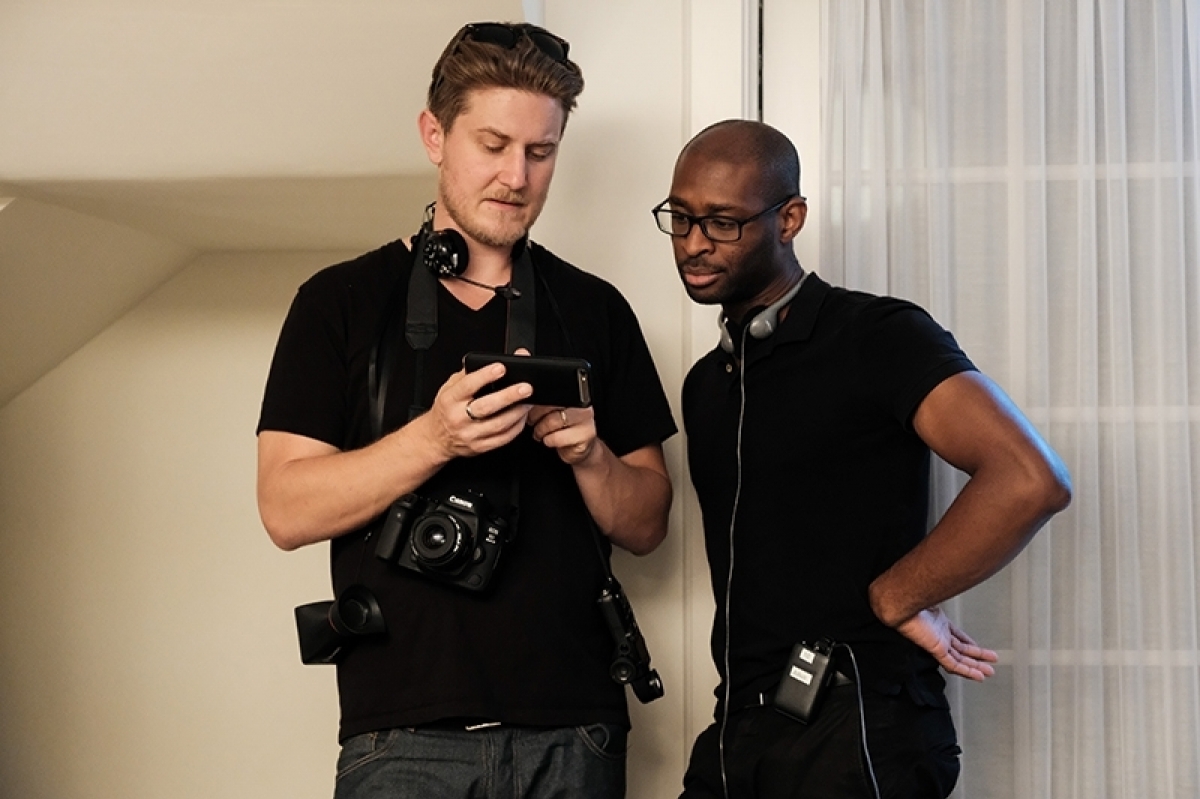
DP Larkin Seiple and director Julius Onah having a discussion on day five of shooting. © Jon Pack.
Footage was captured using a Panavision Millennium XL as well as G Series, E Series and Primo Series Anamorphic lenses with a set of 1.3T anamorphics utilized for a night scene. “We used the G series 25mm, 35mm, 40mm and 50mm mainly,” notes Seiple. “The challenge in shooting 3-perf anamorphic is that it makes the lenses all longer than their actual focal lengths, generally by about 1.5x so our 35mm was much closer to a 50mm. We also used the ATZ or the anamorphic telephoto zoom for some of the more voyeuristic sequences. The set of Primo Anamorphics were used for wide shots as they can open to a T2 which helped us create some separation. Pickups were done with the T Series Anamorphics, and I was shocked by how well they resolved compared to the G Series; definitely a more modern look.”
“The lighting was dictated by the blocking,” reveals Seiple. “We tended to let the actors manipulate the camera placement through blocking. Instead of doing a 180-degree dolly to show a shift in a character’s goal or perspective, we’d have the character move around the camera to create a similar vantage. This was also necessary as we were working in small spaces. The other choice was to keep the camera fairly objective as the film is constantly pushing the audience to make judgments about the characters and their choices. The only time we allow movement was to ramp up the tension during confrontations.” The aspect ratio for the project is 2.35:1. “Many scenes are conversations between two people, so it helped to create some tension in the frame and hide the lighting which was generally overhead.”
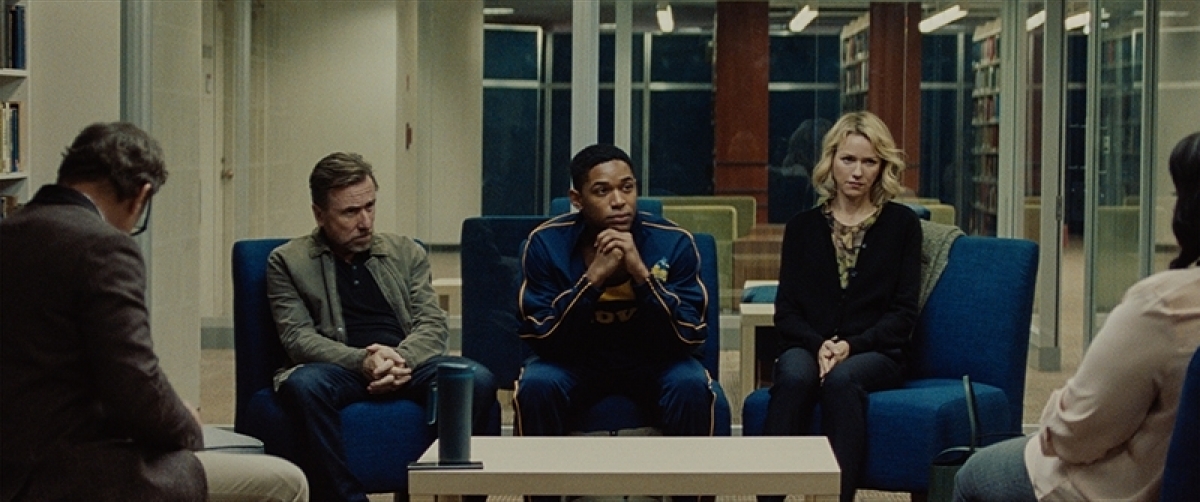
The Edgar family: Peter (Tim Roth), Luce (Kelvin Harrison Jr.) and Amy (Naomi Watts) prepare for a showdown with the high school administration. Courtesy of Cinetic.
Location scouting was tricky. “We were looking for modern schools that were photographic but cold,” states Seiple. “Most schools are either white walls of nothing or warm and woody. We looked at about 20 different high schools and finally chose two different schools on Long Island. We shot in the winter which has lovely low light but made it a huge challenge to make day interiors consistent. It was also freezing and our big ‘oner’ involved a person having a mental breakdown and stripping nude outdoors. On the shoot day it was below freezing and we knew that about 10 takes would be needed, so the scene was moved inside the school which actually made it more intense.” Several crew members were involved in making the cinematography possible. “I had an amazing team comprised of gaffer Gavin Curran, key grip Jesse Saviola, 1st AC Zach Rubin – I’m still shocked how he kept some of these shots so sharp – 2nd AC Greg Pace, loader Justin LeBlanc and Steadicam/A camera operator Dave Isern.”
Luce has an earthy and cool color pallet. “We chose a range of blues, greens, grey and whites for the world,” explains Seiple. “Red was removed from every scene until the third act where it is used in a loud way. Working with Alex Bickel at Technicolor in the DI, we tried to bring out the humanity of the actors, pushing for hints of green and magenta in the faces, something only film can really do. We also ‘beat up’ the shadows and did a subtle duotone of olive throughout the film to create a rich but slightly off palette aesthetic. The look feels like classic Americana but a little off.”
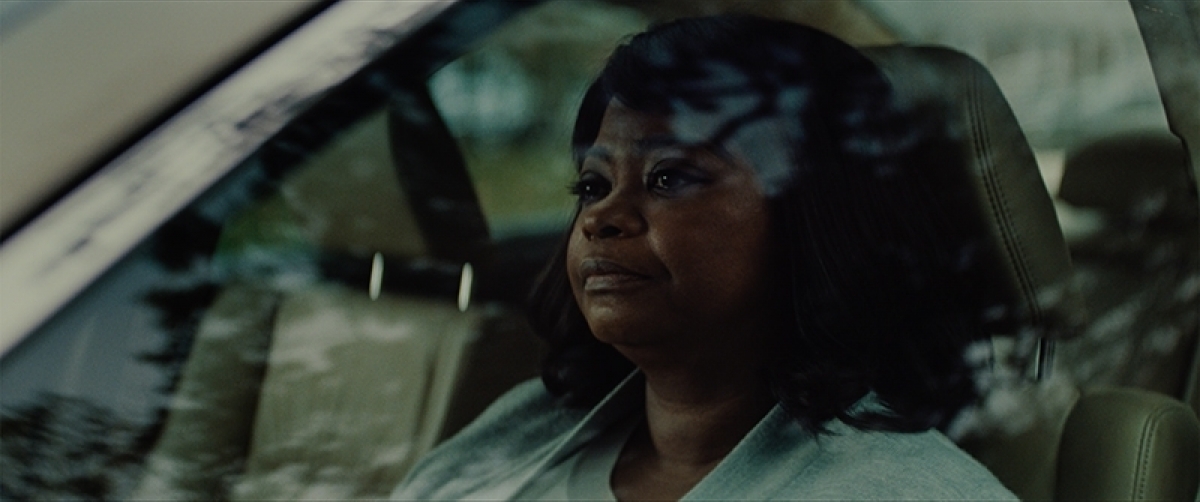
Harriet (Octavia Spencer waits for Rosemary Wilson (Marsha Stephanie Blake). Courtesy of Cinetic.
There was some digital augmentation. “We did have a couple of small VFX shots, but we opted not to use greenscreen and created it mainly in CGI.” Images needed to be honest but not beautiful. “The story of Luce is quite complex, and we wanted to let the audience focus on the minutia of the performances and engage with the layers of the plot so all forms of flashy photography had to go out the window!”